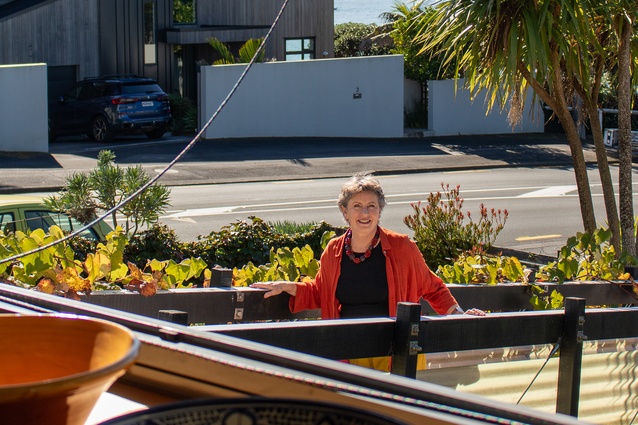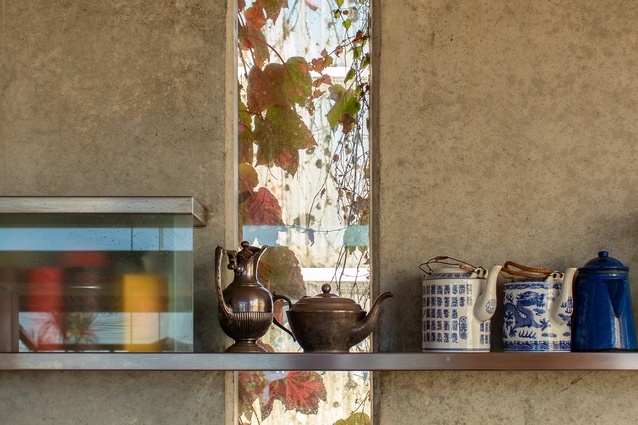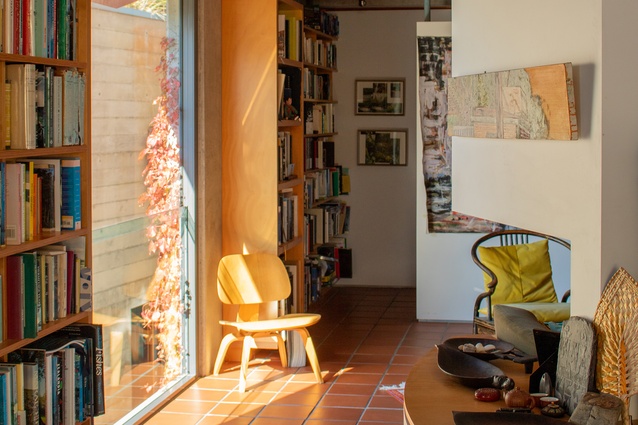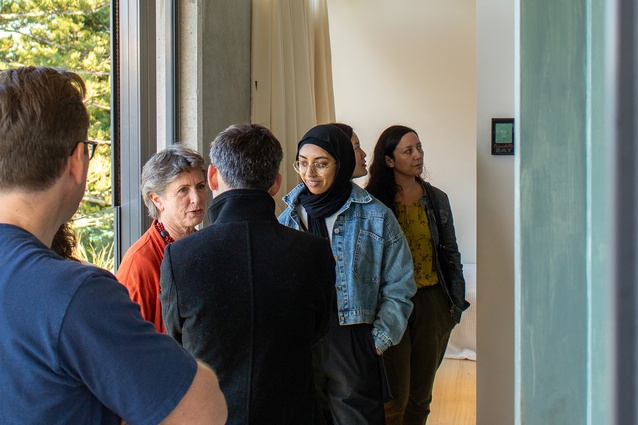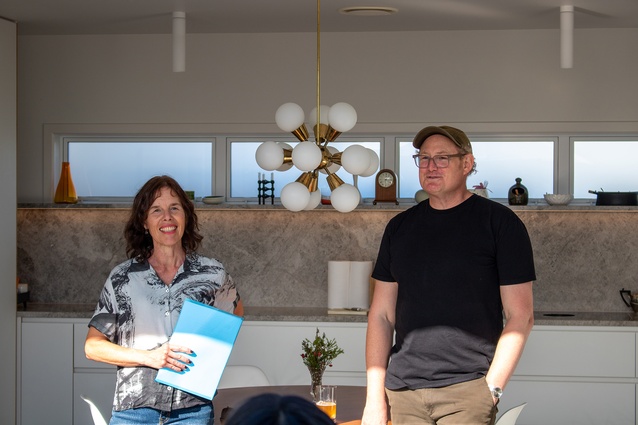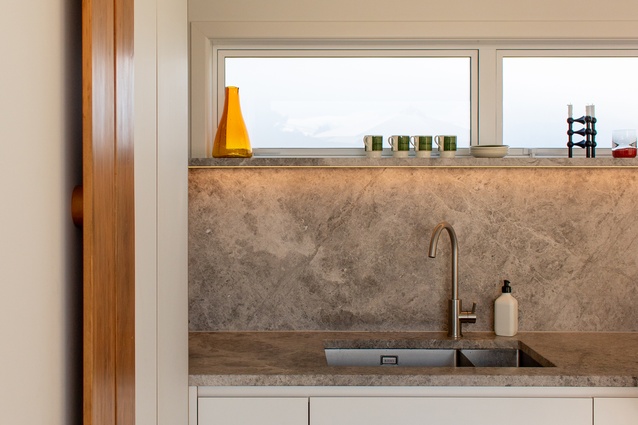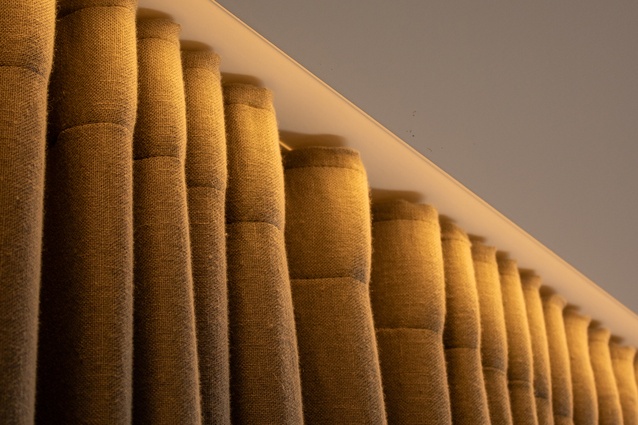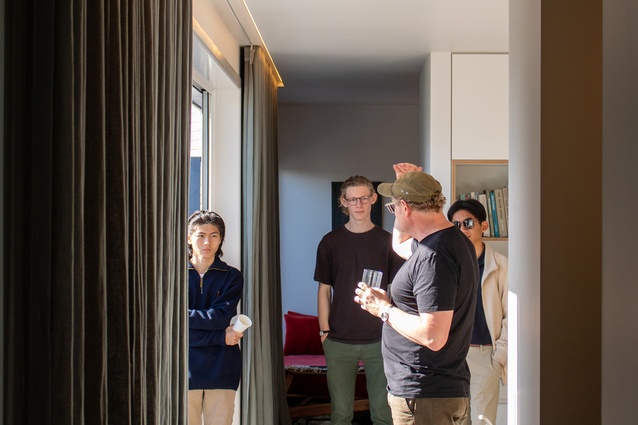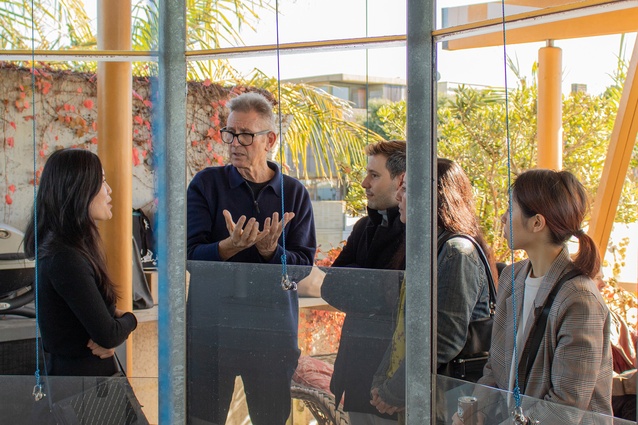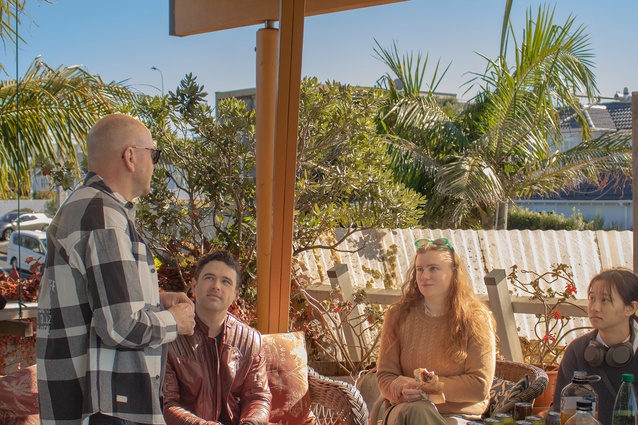Seeing is believing: site visits, study tours and shores abroad
University of Auckland Waipapa Taumata Rau master’s student Sahil Tiku joins a group of architecture students on the Te Kāhui Whaihanga NZIA Auckland Branch tour of two very different projects in Tāmaki Makaurau.
To know architecture, you must experience it: “The real test of architecture is the phenomena of the body moving through spaces, which can be sensed and felt regardless of understanding the architect’s concept and philosophy.”[1] It is one thing to pore over a drawing or a detail, and another entirely to experience a place’s space. There is something intangible about being in an architectural vision, rather than peering at a mere reproduction.
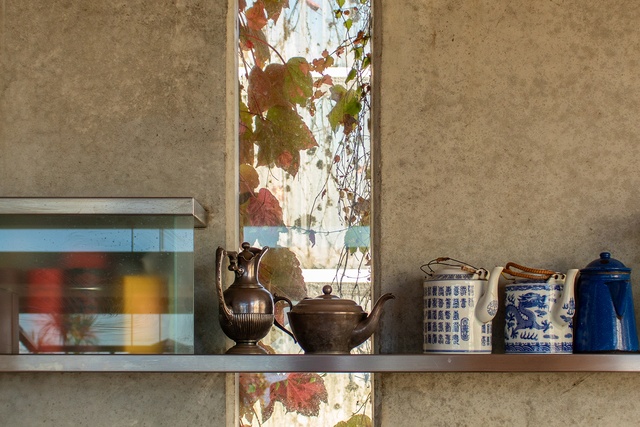
Julie Stout and Mike Hartley opened their homes (and hearts) to a small collection of students from Tāmaki Makaurau’s three architecture schools. Organised by Te Kāhui Whaihanga NZIA’s Auckland Branch (with help from SANNZ), students were able to experience space designed by architects operating within the New Zealand discourse. Crippled by quarantine for a few years, house visits have long been a significant tool in shaping young architects’ ethos: a core memory of my own is visiting Ken Crosson’s Light Box and Malcolm Walker’s own home in my first year in 2019, entranced by a swinging farm gate wall and books upon books of comedic comic commentary.
Narrowneck House boldly addresses te Waitematā, framing Rangitoto with a corrugate roof that is borne aloft by distinctive yellow members. Julie welcomed us into her home via the main entrance: it folds you into the house under another sheet of corrugate, held out by yellow members from a precast wall shrouded in autumn ivy. Inside: all warmth and texture, and plenty of places for plucky students to pick the brains of academics and architects who joined us that morning. Restless geometries evoke Wigley on Deconstructivism: every moment distorts itself to reveal some new, greatly resolved gesture.[2] These moments are settled by uniquely local elements – the studio’s mezzanine reminiscent of the Group’s Rotherham House, and the stairwell’s counterweighted windows call to mind New Zealand’s (and of course, David [Mitchell] and Julie’s) nautical histories.
Offering a different perspective in the afternoon sun, Mike Hartley slid open what felt like the entire north-western face of Lancaster – The Luxury of Enough to welcome us into the di-chen (a portmanteau of ‘dining’ and ‘kitchen’), arguably the most functional example of each constituent I have seen in my short journey through the profession. Lancaster is all about the poetry of the quietly resolved detail: the home’s façade maintains its original 1950s weatherboard character and hides the symphony within. Bevel-back weatherboards are lovingly crafted into handles for colour-coded bedroom doors and cupboards swing open to sit flush with jambs. The curtain mediating one threshold (the massive ranch slider) is gently lit by a hidden light strip and Mike’s own favourite detail, a handrail, artfully marries rich timber with steel painted to match concrete stairs that bring you into the side yard. Lancaster’s floorplate of 135m2 houses five, embodying the philosophy that good design should be within reach.
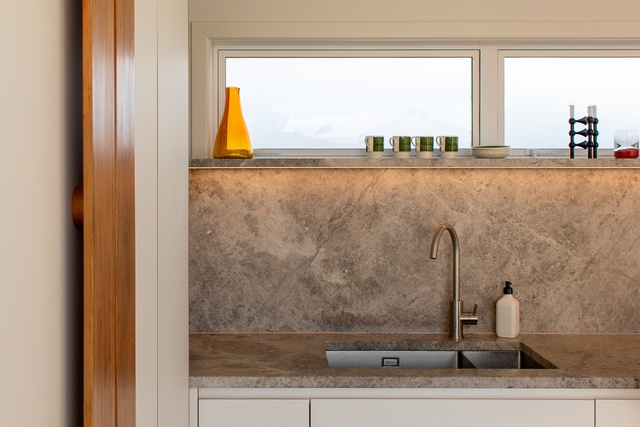
Two houses on a Sunday in Tāmaki Makaurau, offering two very different interpretations of architecture: the grand gesture, and the leitmotif of fine detail. For those that trailed through both with camera and sketchbook in hand, this would undoubtedly have been an opportunity to learn through dialogue, and to ask questions — after all, it is rare to have the person who drew the detail admire it next to you. And for those at the beginning of their university journey, seeing how two architects have honed their philosophies in unique ways (reflecting the interpersonal diversity that gives us value) was hopefully no less than inspirational.
We are a small nation at the bottom of the Pacific and the world. The great precedents that shape our education are often days away, experienced only through the gauntlet of cramped seats, jetlag, and long queues. As time marches on, student bodies expand, red tape gets redder, and faculties grow reticent. Gaggles of students and teachers now only occasionally jet across the world, and these jaunts grow fewer and further apart. With these opportunities seemingly spread thin, the Institute offers a complementary stopgap to the grand tours of academia.
COVID-19 and subsequent social moratoria on international travel have had us look inwards to provide architecture students with the experiential opportunities they need to become good designers. In 2021, Te Pare School of Architecture and Planning sent vanloads of intrepid travellers not to Ronchamp, but instead to Russell. Traversing Te Tai Tokerau meant students were able to engage with not only good architecture, but our architecture. Arguably, this is better for the burgeoning architect’s growth than seeing buildings thousands of miles away on a projector slide. And to experience that home-grown architecture with teachers and designers, those who have offered themselves and their time to imparting tacit knowledge — what could be better?
For our next generation to participate in the ‘global debate’ of architecture, they must of course see what lies abroad, but they must also engage in that ‘extended interrogation’ of what is here, what is local, what has washed up on our shores already.[3] With events like these, architectural introspection proves its moxie and reinforces its relevance. It is refreshing (dare I say, exciting) to see this position reflected in the Institute’s events programme. I find myself hoping that these ‘open homes’ (re)set a precedent as a new means to nurture new branches on our architectural family tree.
To paraphrase Pip Cheshire: “How can we build without knowing ourselves?”[4]
[1] “Thought, Matter and Experience. Steven Holl in a Conversation with Juhani Pallasmaa”, El Croquis, no. 108 (2002): 7.
[2] Philip Johnson and Mark Wigley, Deconstructivist Architecture: The Museum of Modern Art, New York (Boston: [Greenwich, Conn.?]: Little, Brown; Distributed by New York Graphic Society Books, 1988), 20.
[3] Mark Wigley, “Paradise Lost and Found: The Insinuation of Architecture in New Zealand (1986),” in New Dreamland: Writing New Zealand Architecture (Auckland, NZ: Godwit, 2005), 283.
[4] Pip Cheshire, “There is no view that is not improved by a decent bit of architecture,” (Fast Forward Lecture Series 2024, the University of Auckland Waipapa Taumata Rau, May 2024).

